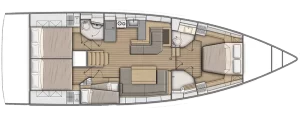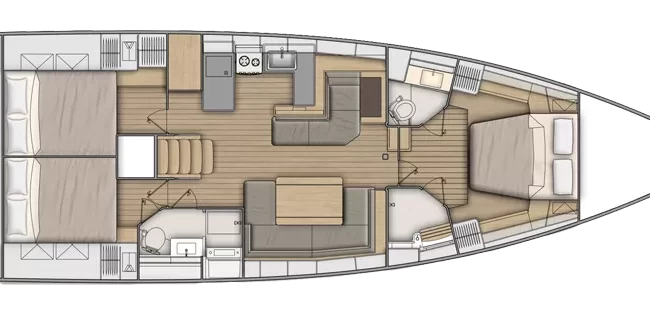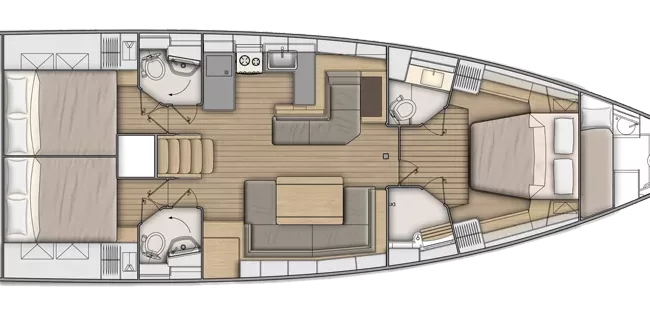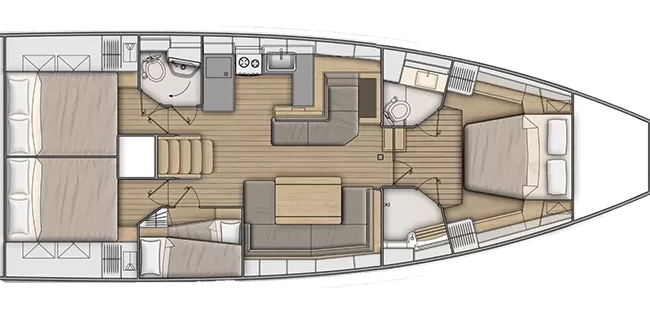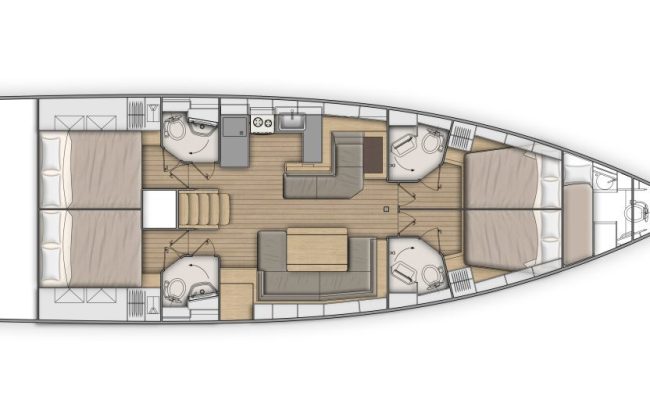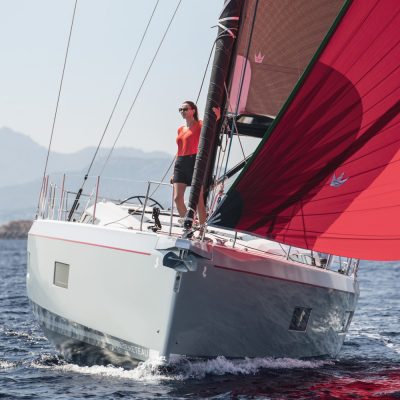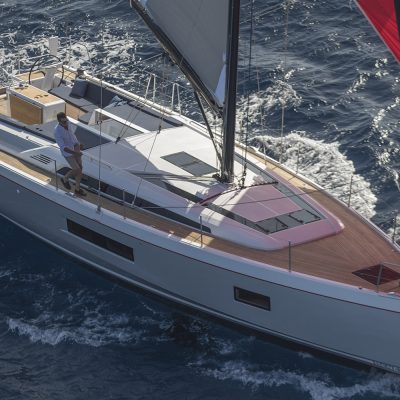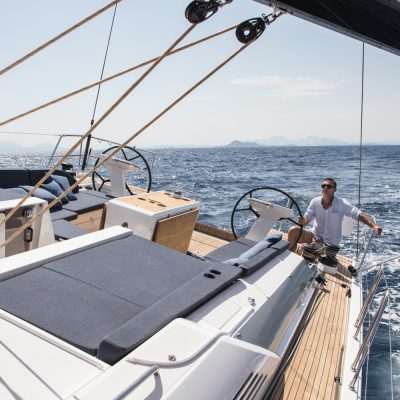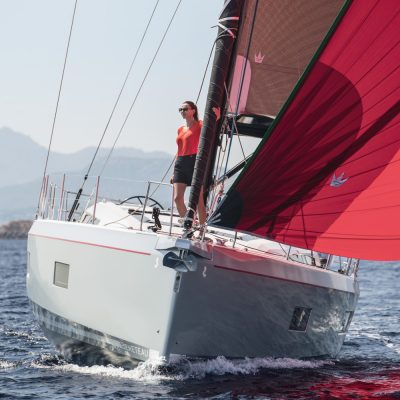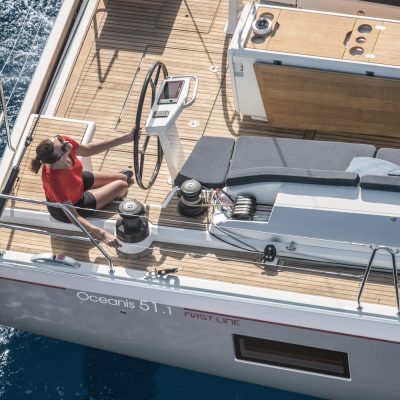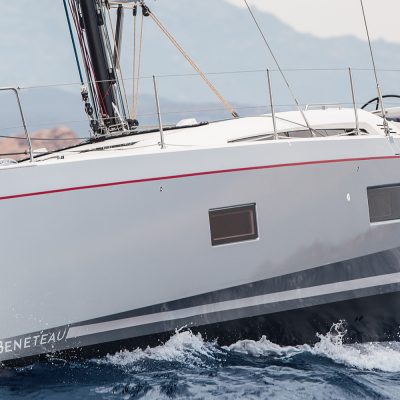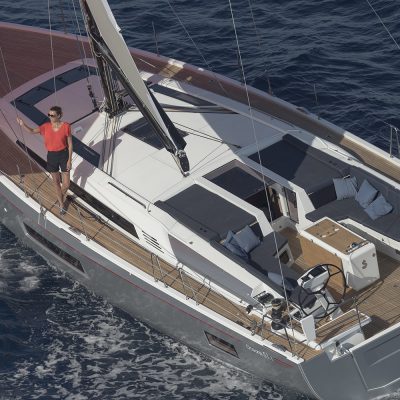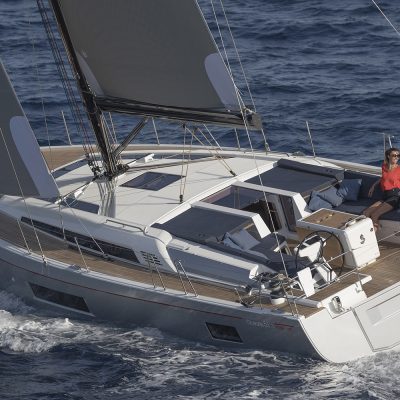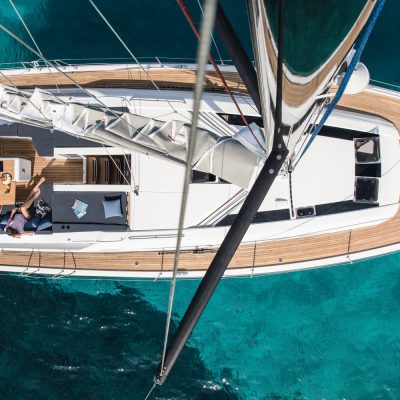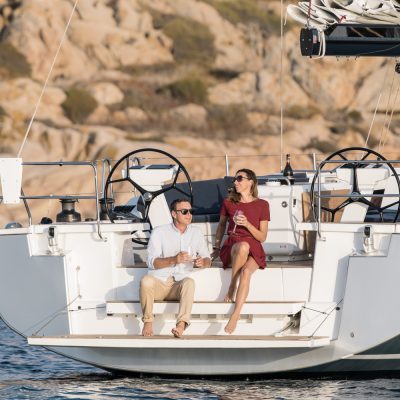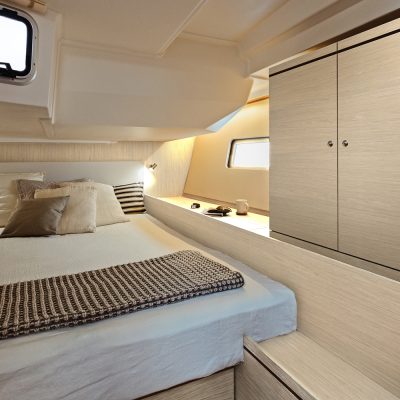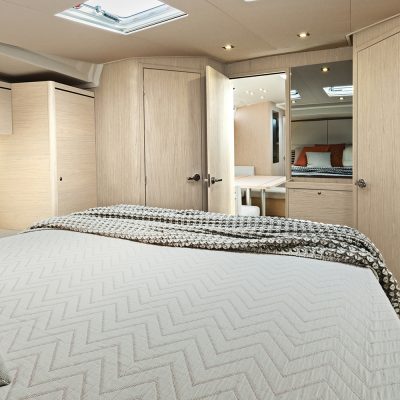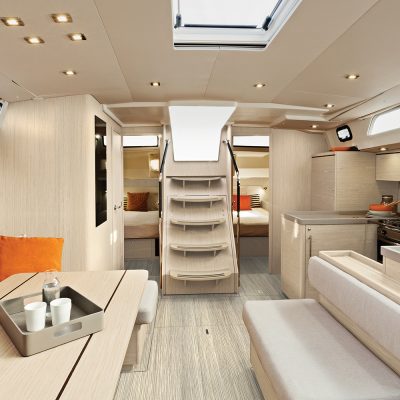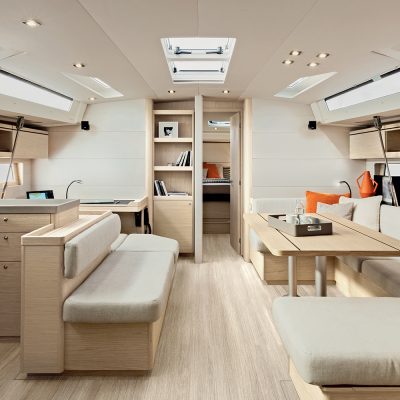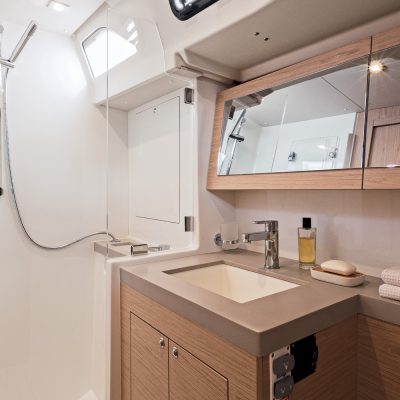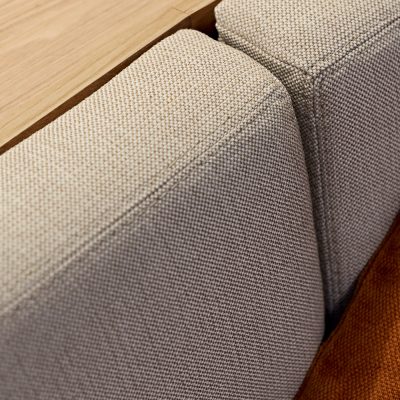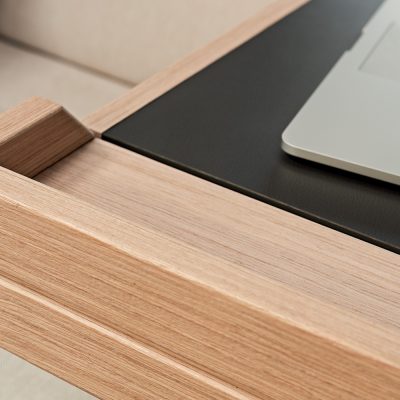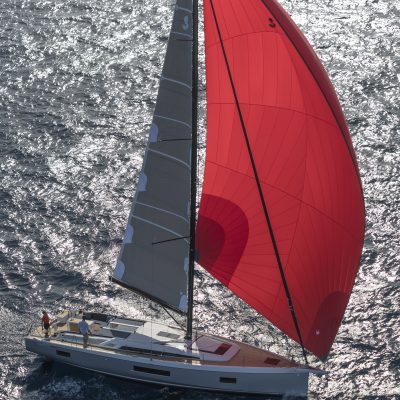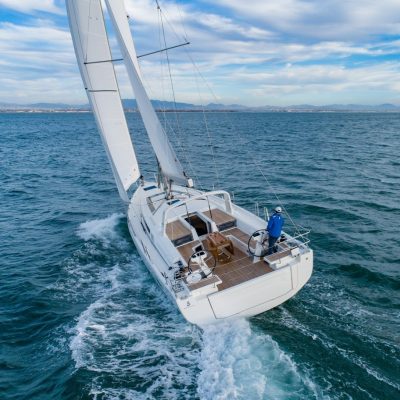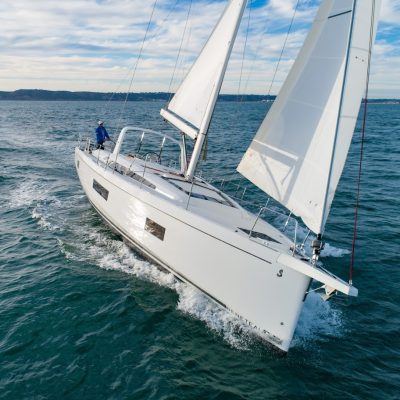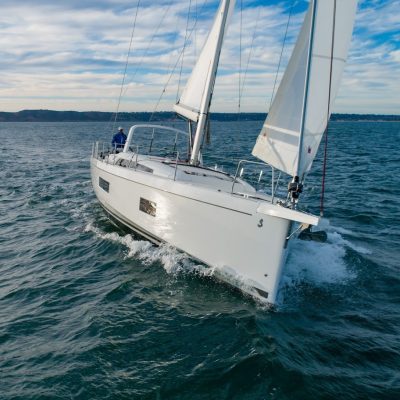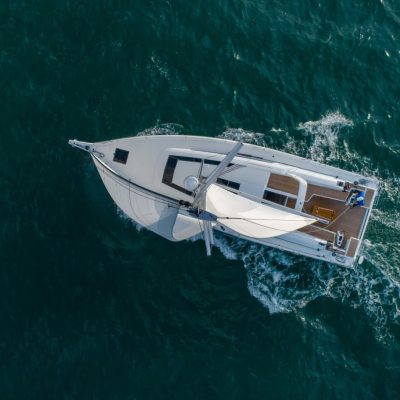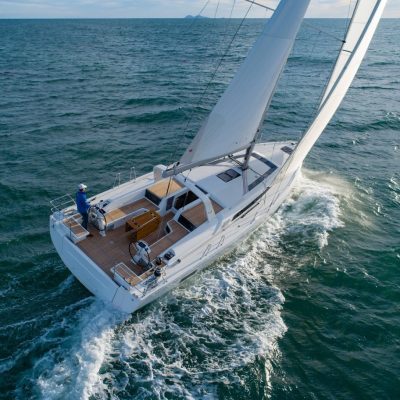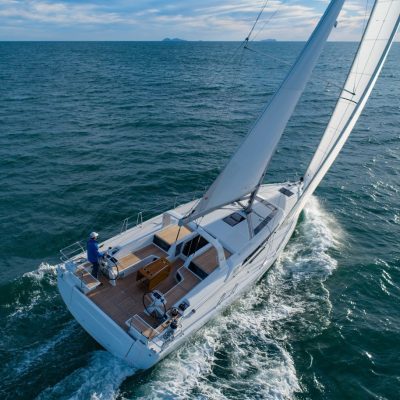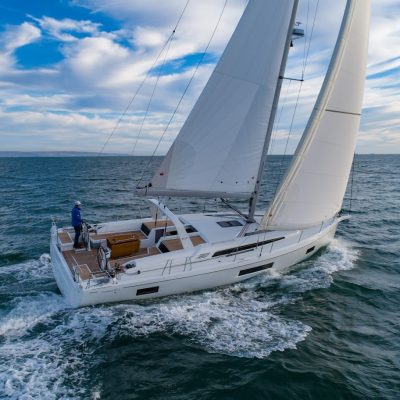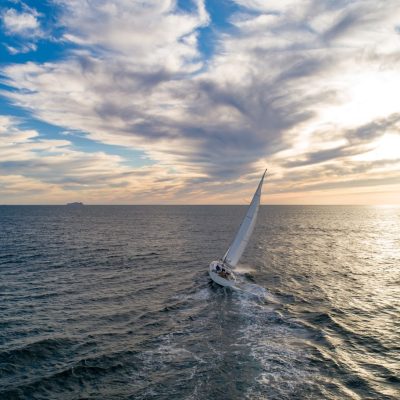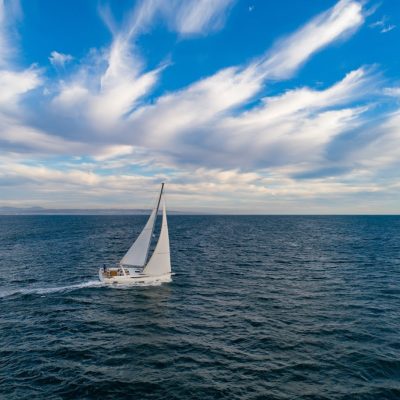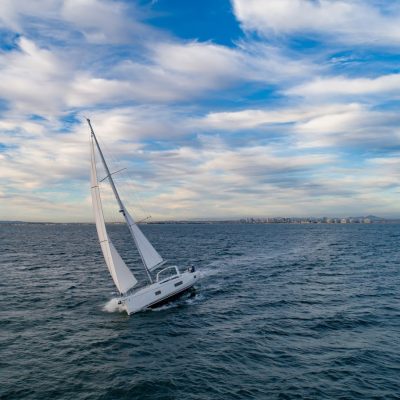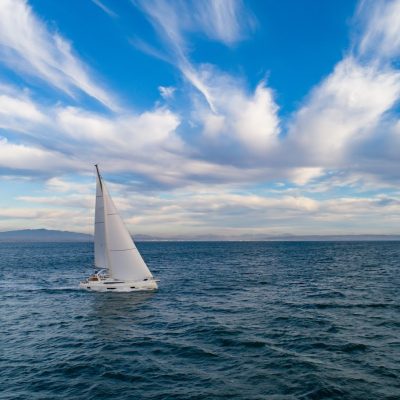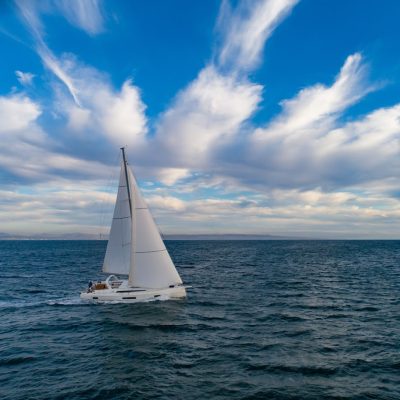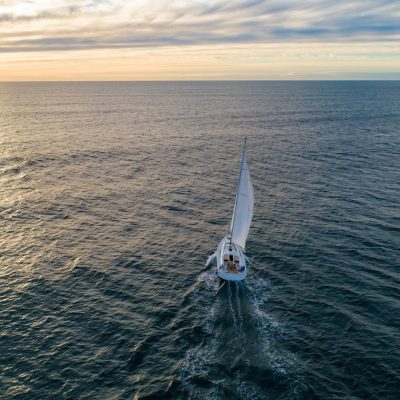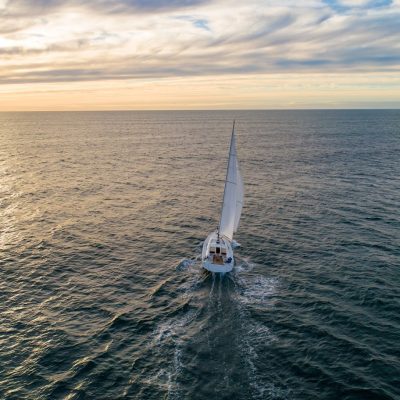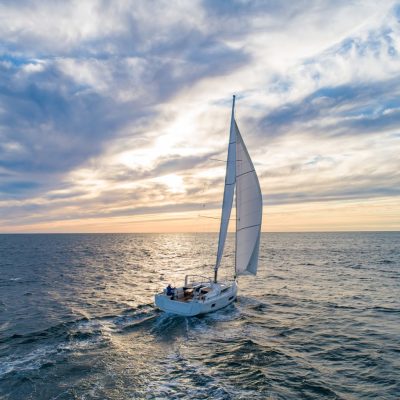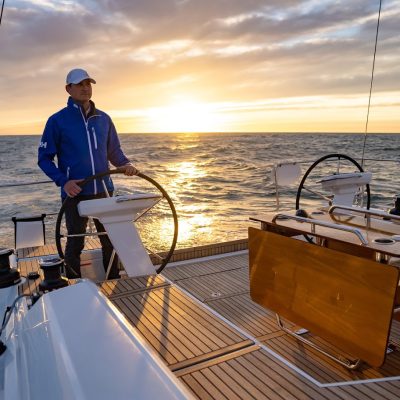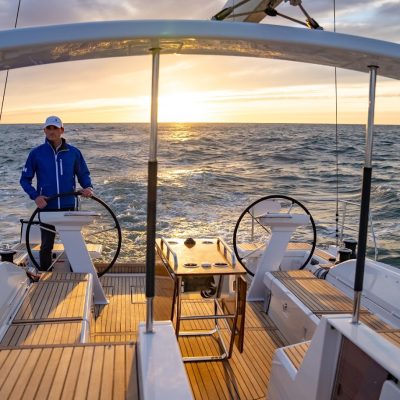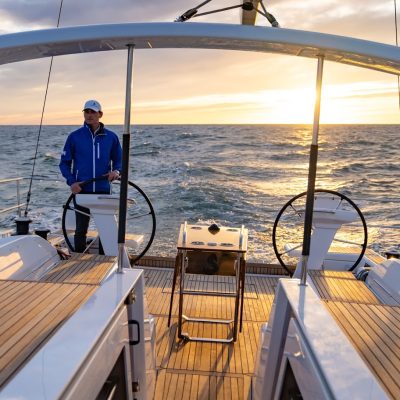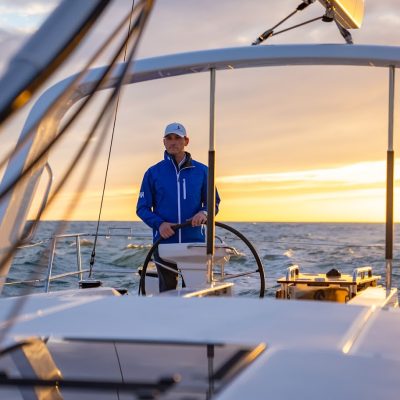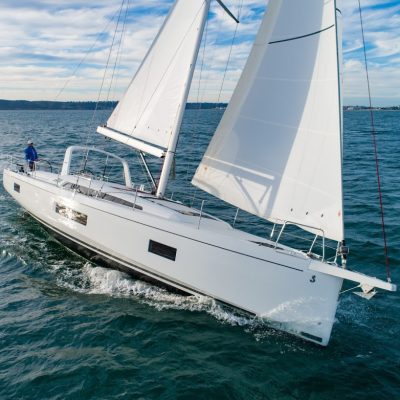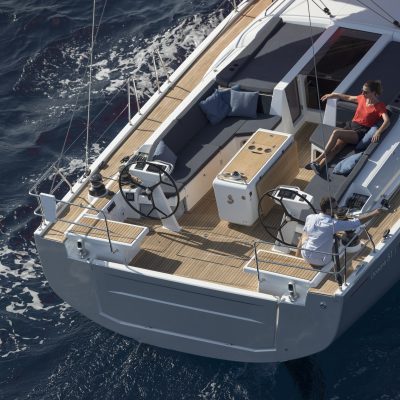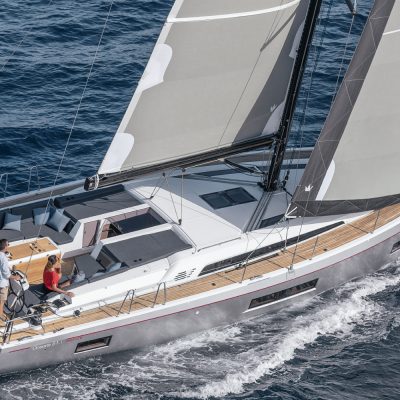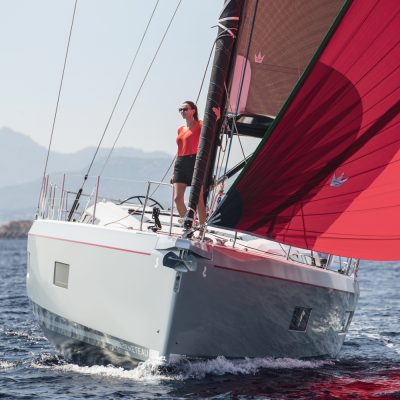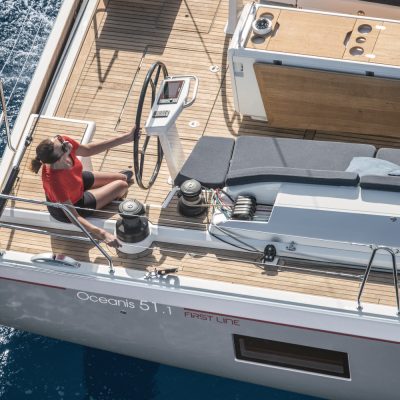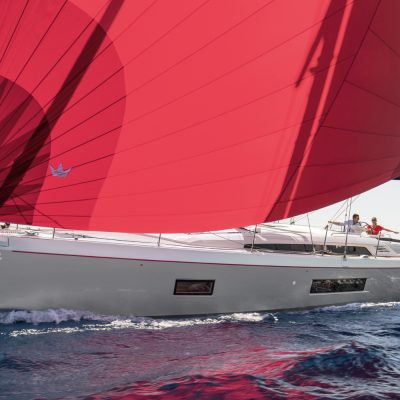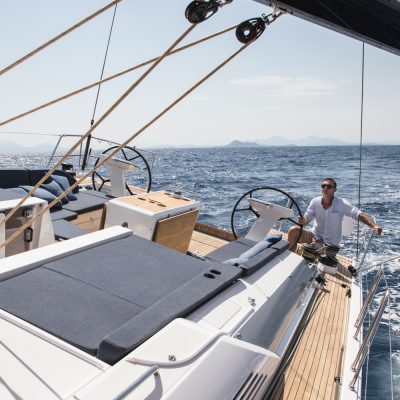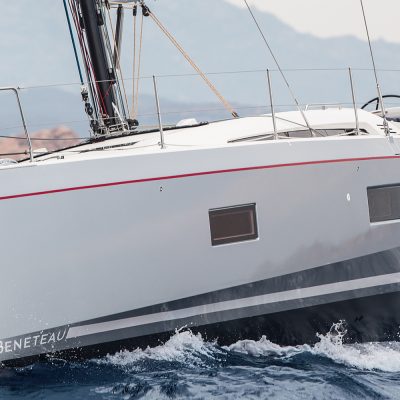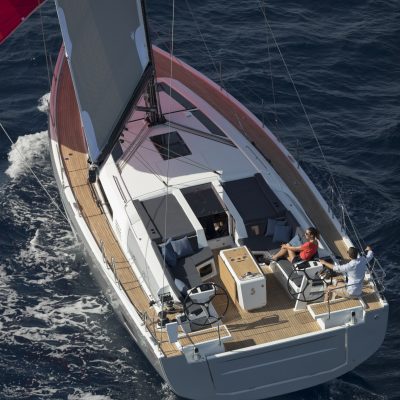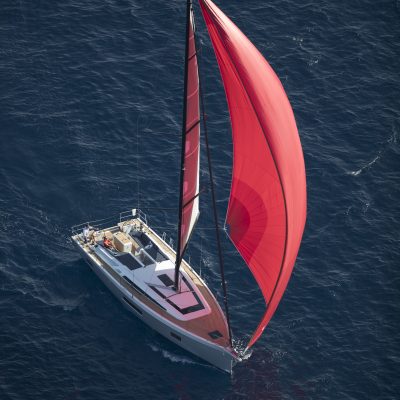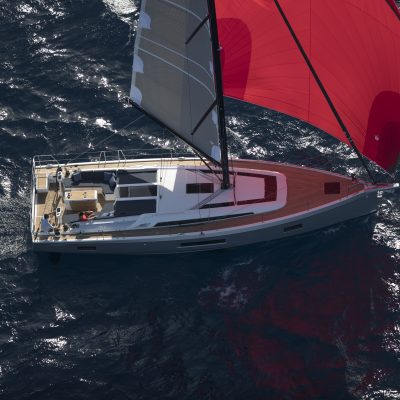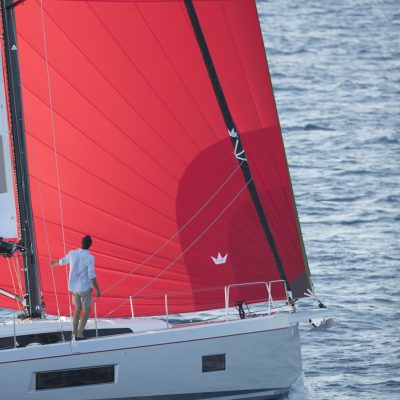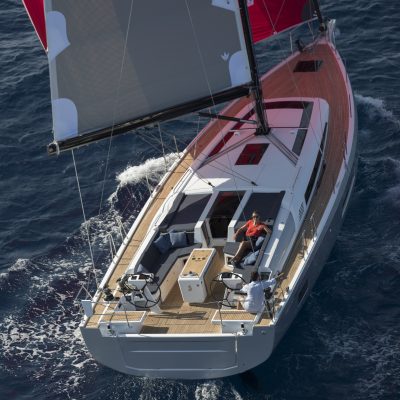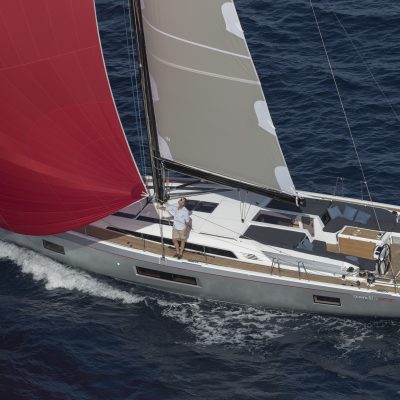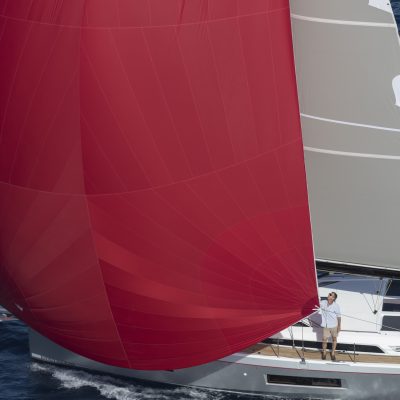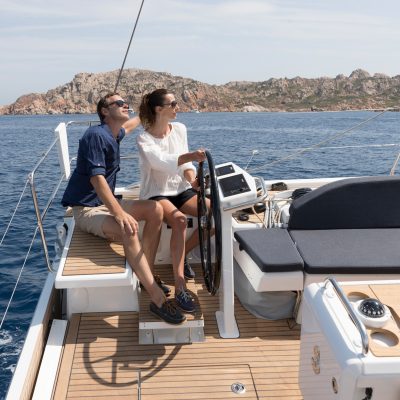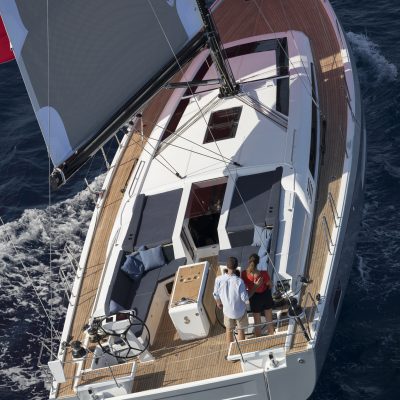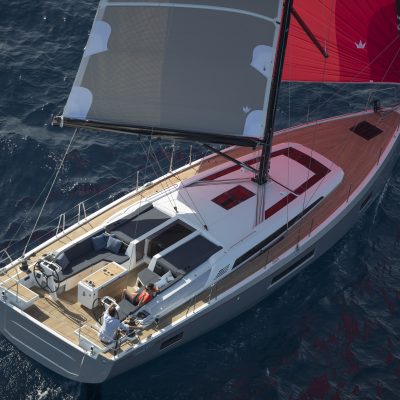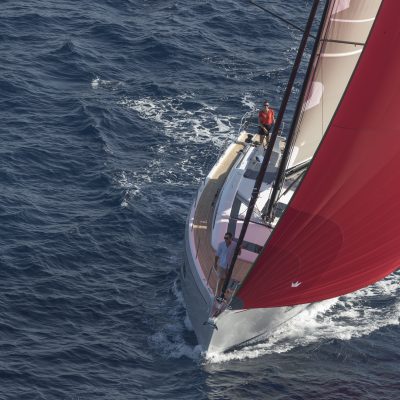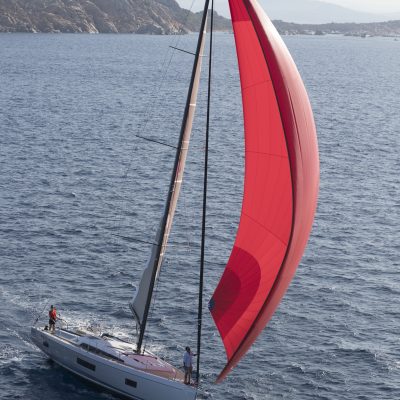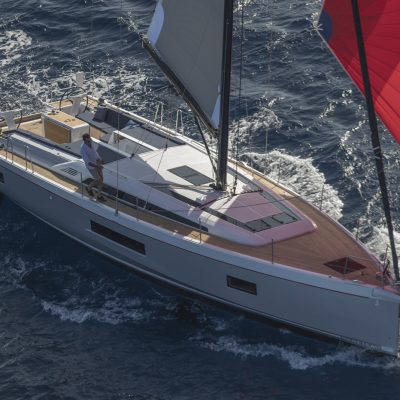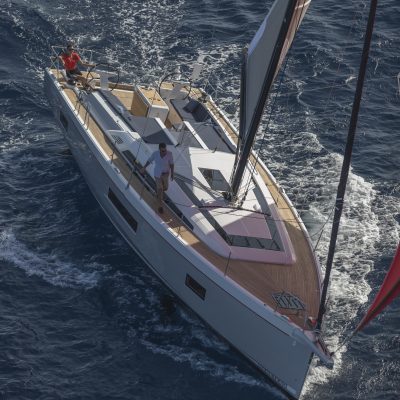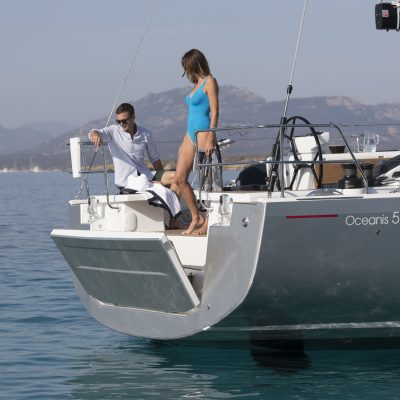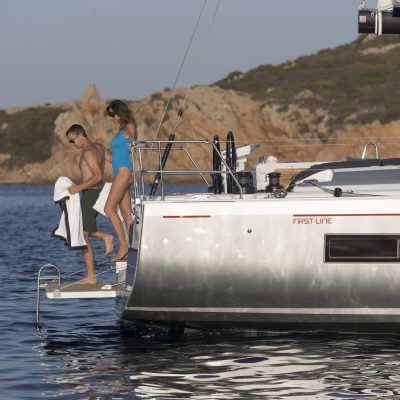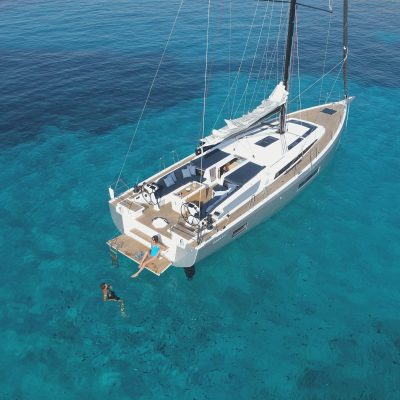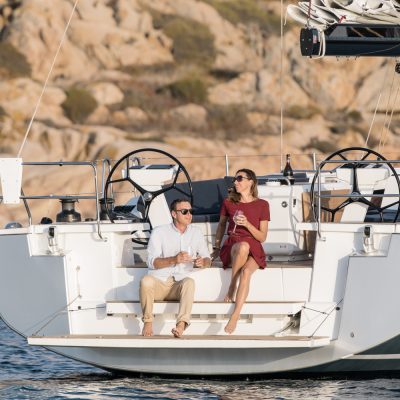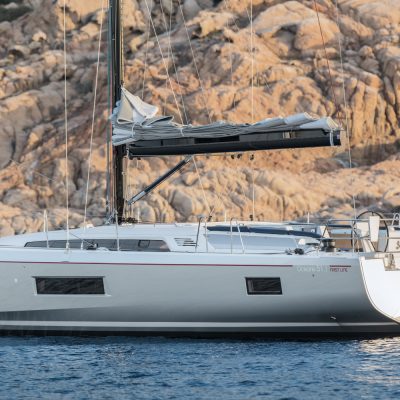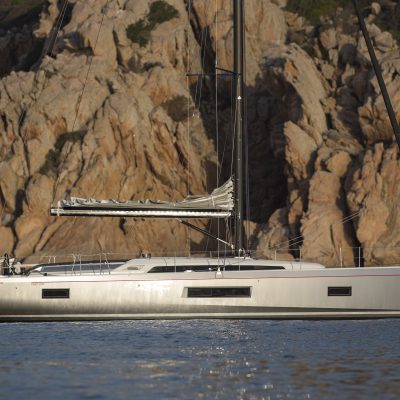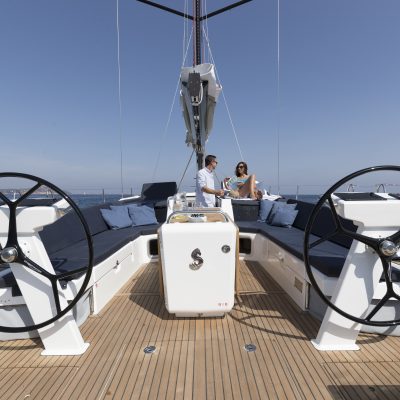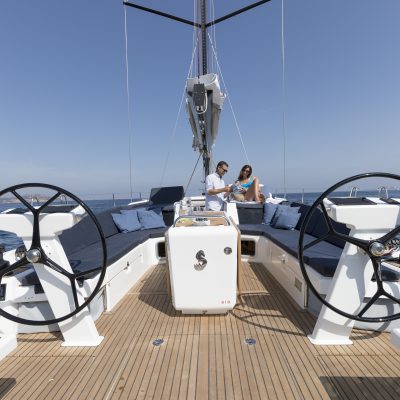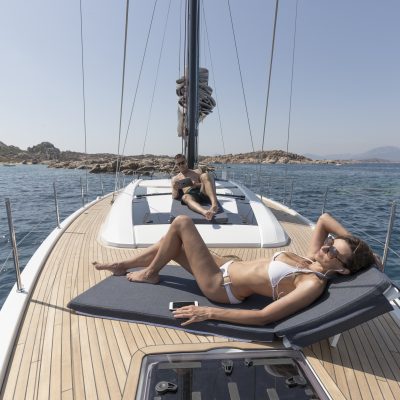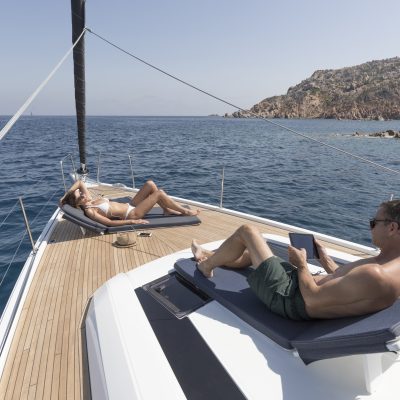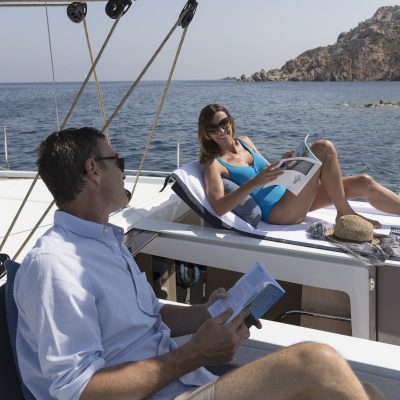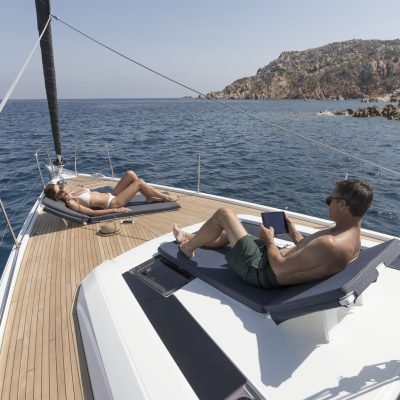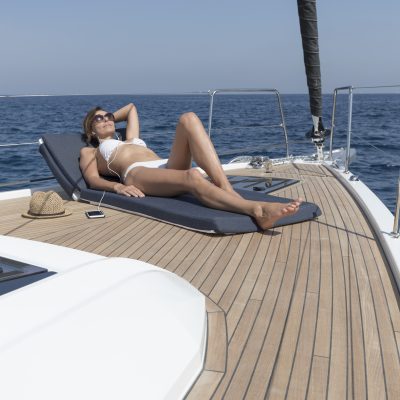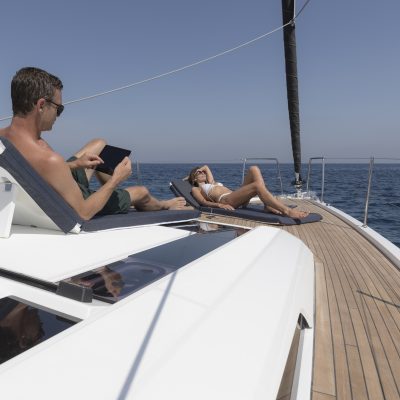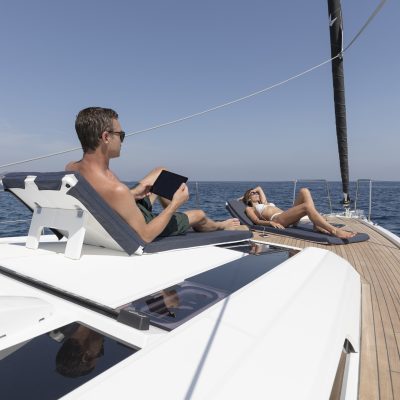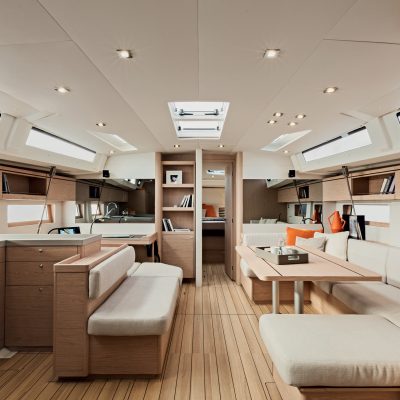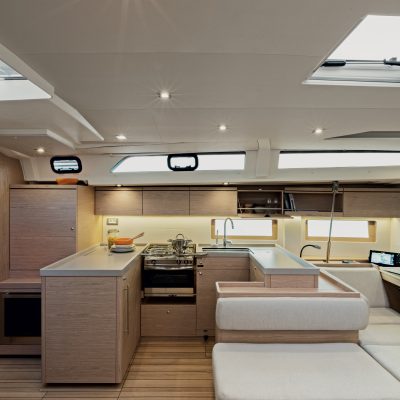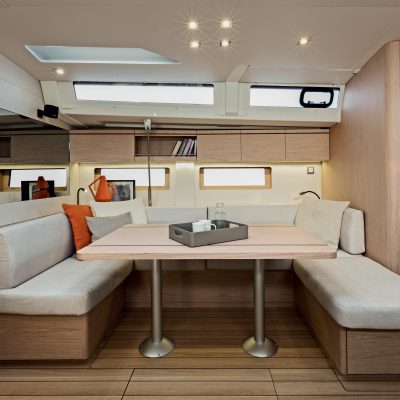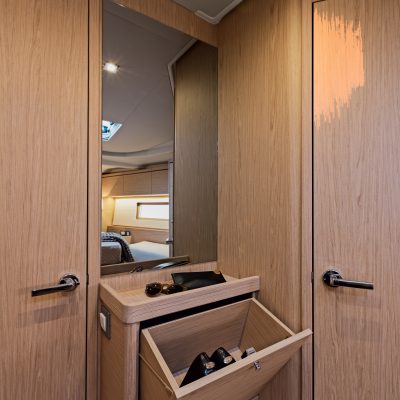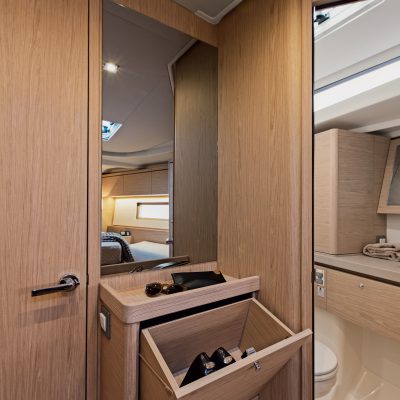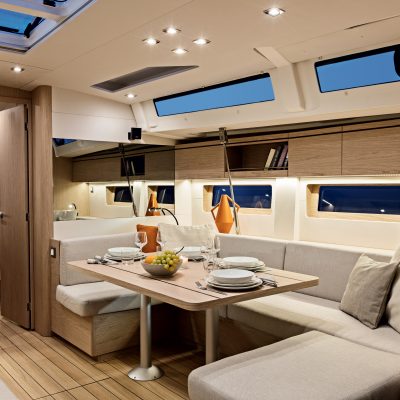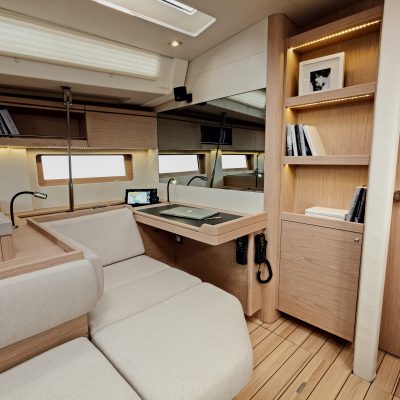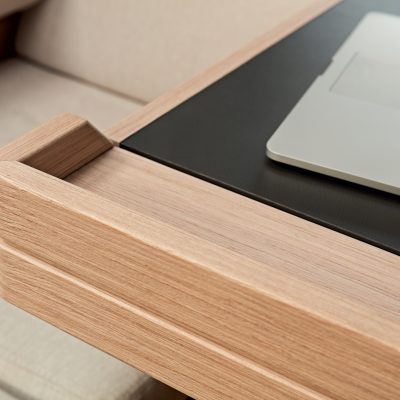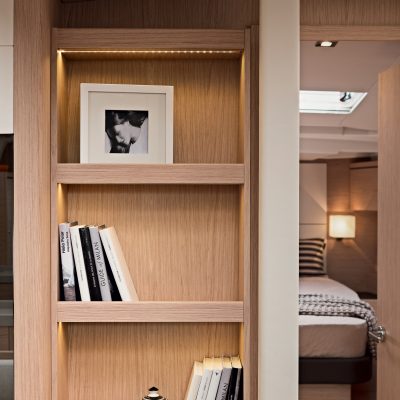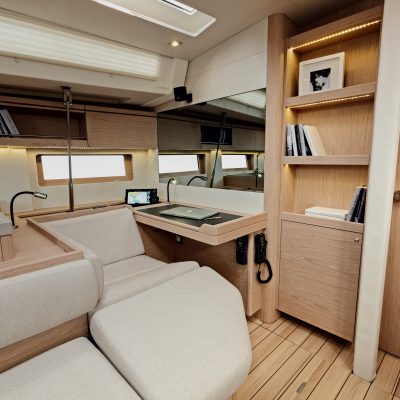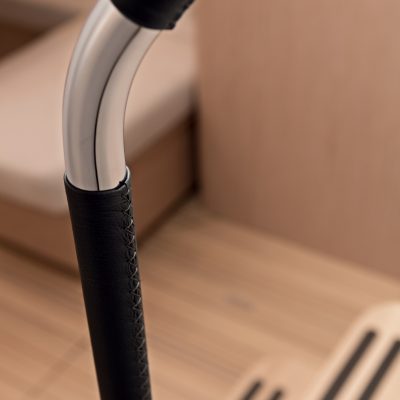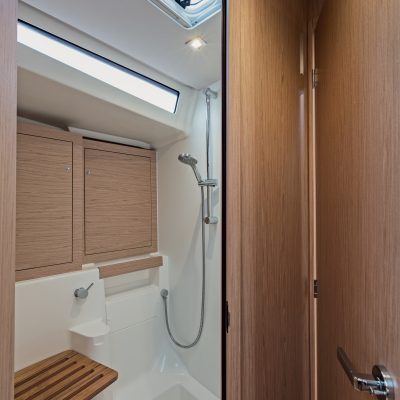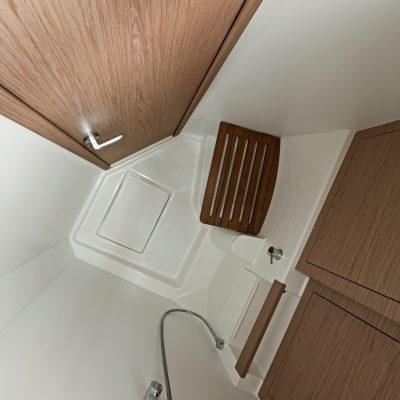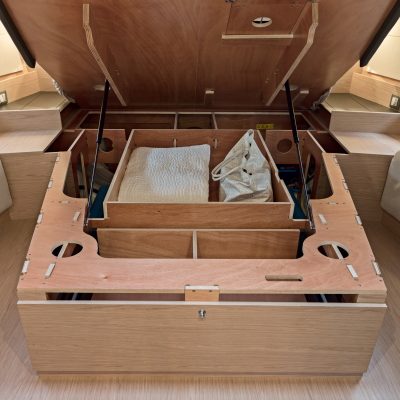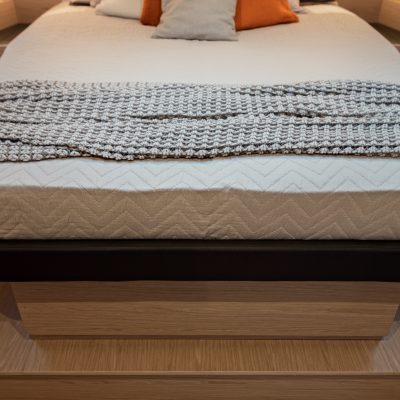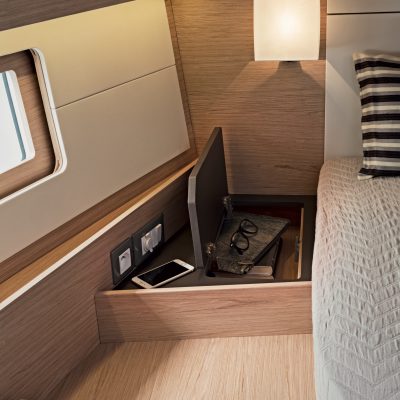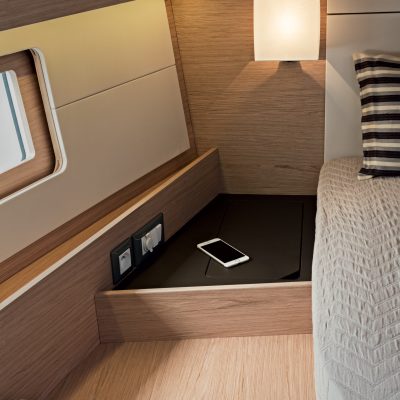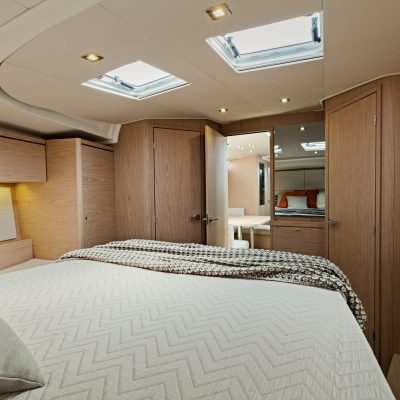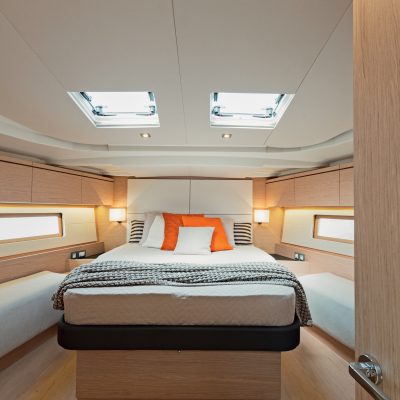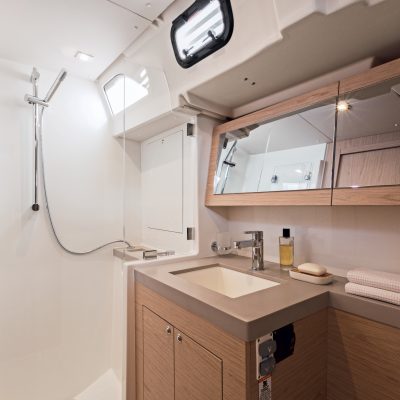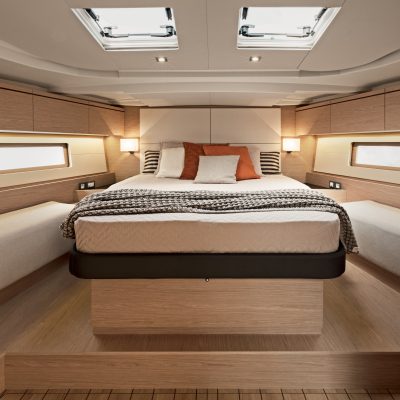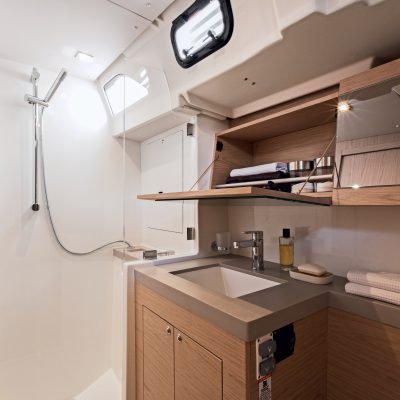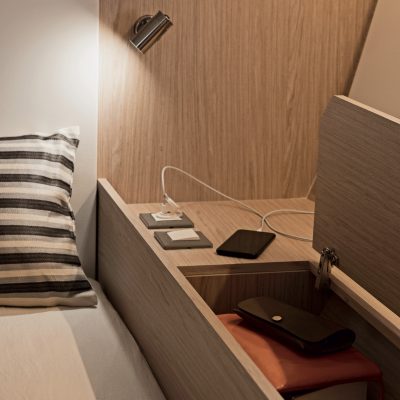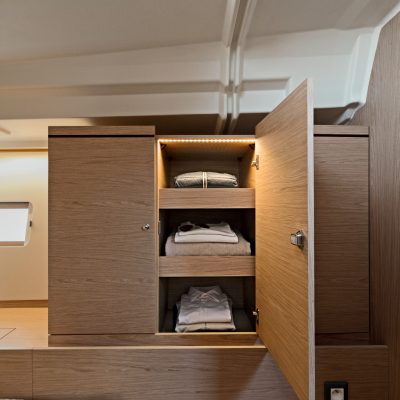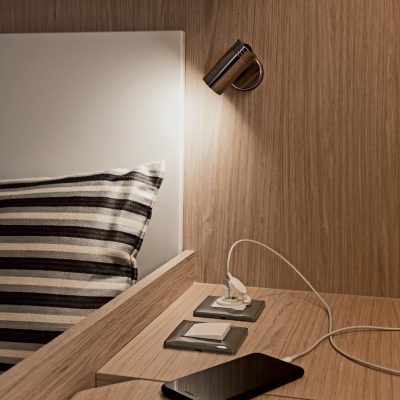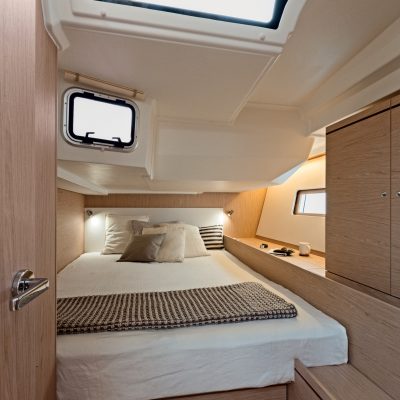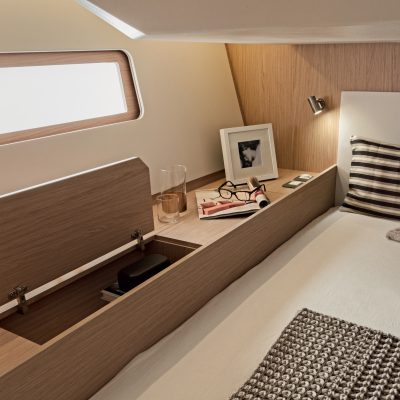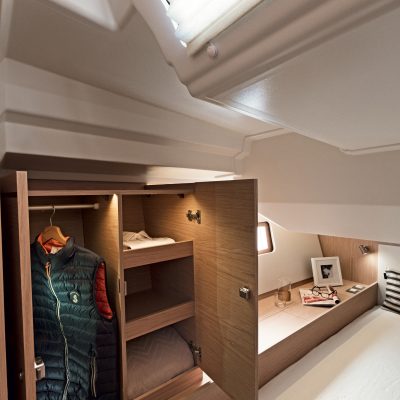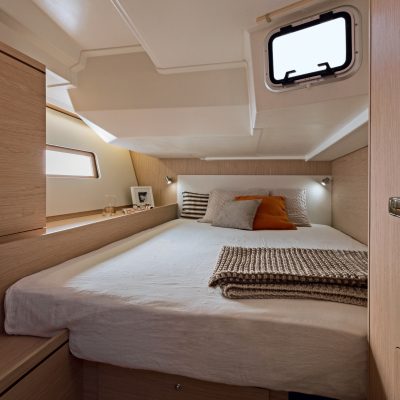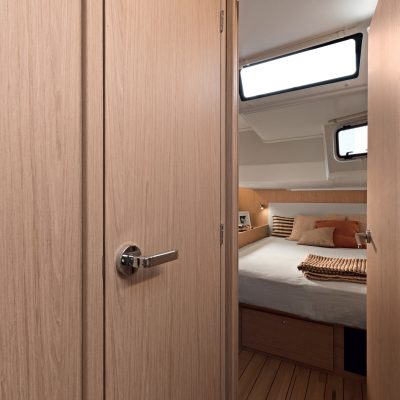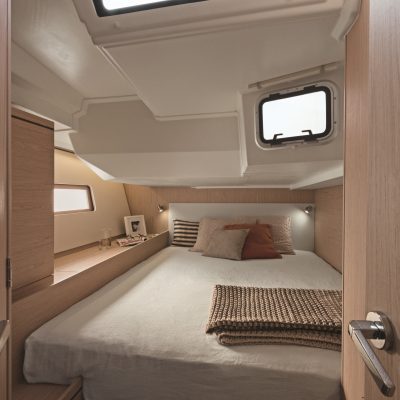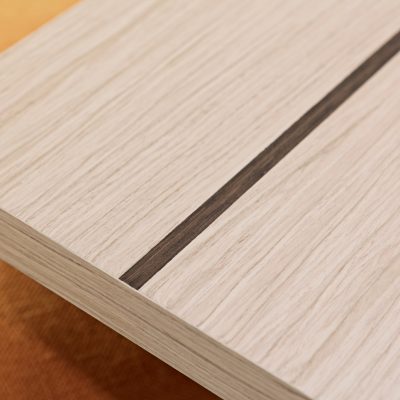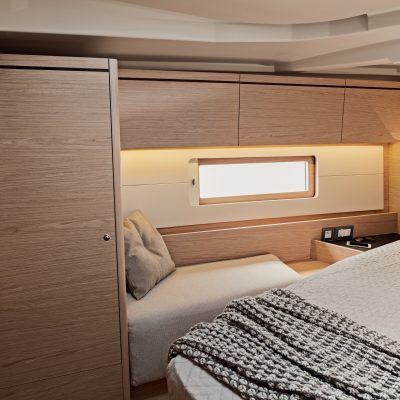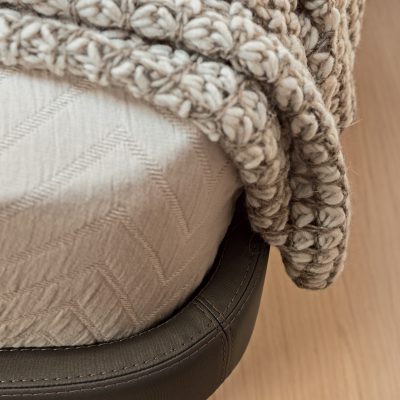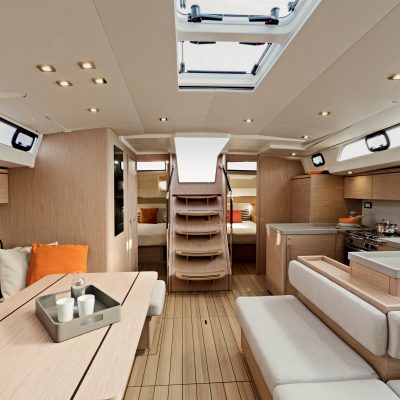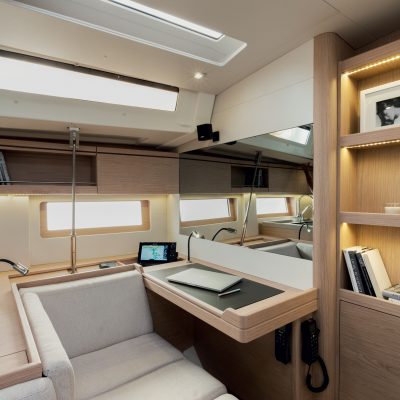
With taut lines, a new stepped hull and a stylish deck plan, the Beneteau Oceanis 51.1 is the first of a new generation.
Easy to handle, comfortable and smart, the number of customizations available has been increased to provide more than 700 combinations. The Oceanis 51.1 is spacious, elegant, cleverly designed, and fast, and successfully revisits the cruising yacht.
Beneteau Oceanis 51.1 EXTERIOR DESIGN
One-third of the Oceanis 51.1’s hull is now stepped. In addition to the aesthetics of this flared shape, the new hull creates additional interior space allowing for exciting new layouts on a boat this size. With an emphasis on taut cruiser lines, she is a joy to move around and reassuringly safe. The spacious cockpit, many relaxation and sunbathing areas, as well as an aft swim platform, promise true comfort.
Beneteau Oceanis 51.1 INTERIOR DESIGN
The large hull portholes bathe the boat in light and elegantly emphasize the interior design by Nauta Design creating a wonderful atmosphere. A choice of brushed oak or mahogany woodwork ambience increases the opportunities for customization.
RENEWAL OF THE CRUISING YACHT
The furling mast, self-tailing jib and all the halyards and sheets on the standard model are all brought back to a single winch at each of the helm stations, making her simple and easy to sail. As for harbour manoeuvring, Dock & Go technology simplifies everything.
The architectural choices that stand out on the Oceanis 51.1 are reflected in her habitability and an incredible amount of space. Inside, the owner’s cabin has an en-suite shower room and toilet, and a 1.6 m wide island bed. A fully-fitted U-shaped galley has many convenient appliances. Truly a space to enjoy together, it is as pleasant to use under sail as it is at anchor.
Fitted with an extra-long carbon or aluminium mast, the Oceanis 51.1 First Line has up to 35% additional sail area in high-tech materials. The boat has a 2.8 m lead bulb keel in this high-performance configuration. This reduces weight and hydrodynamic drag. To complete this version, a composite steering wheel, top-of-the-range deck fittings and boomsprit marry speed and cruising and promise exciting new sensations.
The mobile application, Seanapps, and its onboard unit let you view the status of the boat’s various systems (battery charge, fuel or water tank levels, maintenance scheduling) via your smartphone, as well as plan your route or review your sailing status using your mobile phone.
If you would like to buy a Beneteau Oceanis 51.1 for private use, for placing in our highly regarded charter fleet in the Caribbean, or would simply like to learn more about other yachts email Robin Hodges at [email protected]. Full contact details for our team can be found here.
- Design Year
- 2024
- Hull type
- Monohull
- Length (LOA)
- 52.4 m / 171 ft 11 in
- Beam (width)
- 4.8 m / 15 ft 9 in
- Displacement
- 13,930 kg / 30,710 lbs
- Draft (depth)
- 1.92 m / 6 ft 4 in
- Primary fuel tank capacity
- 201 L / 53 gallons
- Water capacity
-
1 x 440 L / 1 x 116 gallons
- Engine make
- Yanmar
- Engine size
- 110 hp / 82 kW
- No. of engines
- 1
Boat Review: Beneteau Oceanis 51.1
ZUZANA PROCHAZKAUPDATED:MAY 29, 2018ORIGINAL:MAY 10, 2018French boatbuilder, Groupe Beneteau, never introduces just one new idea. Instead, it likes to package concepts together and give them different names, so that when a new model is launched, owners can choose the combination that works best for them.
With the introduction of the Oceanis 51.1 (the fifth model in the “.1” line that will replace the Oceanis 48) Beneteau once again brings three different flavors to market for the racer (First), cruiser (Comfort) and daysailer (Easy). This targets three kinds of buyers with one hull design and adds flexibility that makes everyone feel catered to and special. No wonder Beneteau’s catchphrase is, “There’s an option for that.”
Design & Construction
The three iterations share the same hull but come with different interiors and rigging. The “Easy” daysailer comes with a self-tacking jib, in-mast furling for the mainsail and a minimum of winches to manage lines. The “Comfort” cruiser adds an internal D1 lower shroud, two more Harken winches, an arch for the mainsheet attachment point, sun beds on either side of the companionway and an outdoor grill. Finally, the “First” racing version packs an additional 35 percent of sail area, set on either a carbon fiber or aluminum spar, and a 9ft 2in keel with a bulb. With this performance package, winches and deck hardware are also upgraded, and a hydraulic backstay and composite wheels are added.All three versions share a hull that includes a chine over a third of its length. Standard draft is 7ft 7in, with a shoal-draft keel available drawing 6ft 1in, in addition to the aforementioned performance keel.
On Deck
The first design to be launched under Beneteau’s new marketing director, Gianguido Girotti, the Oceanis 51.1 is all about attention to detail, with clever surprises all around: hinge-up foot braces at the helms work well when heeling but don’t create toe-stubbers when not in use; lifelines have been raised a few inches as they should be on a distance cruiser; and the large aft lazarette has plenty of room for fenders, lines and a Fischer Panda genset that has good access all around. The cockpit table is massive with excellent handholds, liferaft stowage at the aft end and a refrigerator at the other. In between is a wooden tray insert that can be loaded up with drinks and snacks in the galley and brought to the cockpit, where it will stay in place even underway.An array of six Spinlock sheet stoppers manage the lines on either side of the cockpit, and the winches are positioned so that grinders face forward and can see the sails. The composite sprit takes the anchor well away from the plumb bow and provides an attachment point for a Code 0. It also naturally elongates the hull, which is a nice aesthetic, although I would like to see the small navigation lights moved off the deck and higher up on the bow pulpit where they will be more visible from a distance.
One thing in need of change is the placement of the deck fills. On the port-side, the water and waste fills are only about 4in apart and regardless of how careful one is, the possibility of contamination of the water tanks is high.
Another head-scratcher is the size of the helm consoles—they’re tiny. Not only do they look completely out of proportion compared to the substantial cockpit table, but they can only accommodate a 9in B&G MFD and little else. The engine throttle, wind instrument repeater, windlass remote panel and bow thruster control are all by your ankles at the starboard wheel. Not only do you need to bend down to operate the thruster and engine, taking your eyes off the bow just as you are docking, but it’s easy to accidentally activate the thruster as we did three times on our test sail.
That said, lounging spaces abound with two on either side of the companionway and a large sun pad on the bow. Another clever option is a grill that swings out from the aft bench so the chef can stand on the electric swim platform to cook. Beneteau has also brought over the optional hideaway dinghy davits from its powerboat line. They retract completely out of the way when not in use so as not to impinge on the boat’s sleek profile.
The saloon looks especially light with the new “brushed oak” finish
The saloon looks especially light with the new “brushed oak” finishAccommodations
Layout options include up to five cabins and four heads (if you count the crew quarters in the forepeak). Our test boat had three cabins and two heads with the master stateroom and its split shower/head compartments forward. The interior is very airy due to multiple overhead hatches in the saloon and master stateroom and hull ports throughout. A new finish called “brushed oak” adds simulated wood grain texture for a richer look. Mahogany is the other option.The galley is C-shaped and to port with a two-burner Eno stove, Vitrifrigo drawer refrigeration and soft-close drawers for plenty of stowage space. The galley provides good brace points so it won’t be a struggle to prep meals even on a port tack.
The nav station is large and up against the forward saloon bulkhead. Its seat also makes a sideways lounge with a pop-up feature in the middle to support your legs. This neat little feature will probably make it the favorite seat in the house. The companionway should win an award for its large, easy steps and good railings on either side.
Under Sail
Due to their cored construction and easy rigs, Beneteaus generally sail well in light air and with little effort, so I was looking forward to our test on the Chesapeake. Sadly, we were met with little to no wind. At one point, though, 6.4 knots of apparent wind materialized over the deck, and on a beam reach with flat water, we accelerated to nearly 5 knots, which tells me that this is a capable design.Our upgraded Elvstrøm laminate sails sheeted in flat as pancakes. For all but the racing crowd, a self-tacking jib and Code 0 will be the best rig combination.
Under Power
With just over 30,000lb of displacement, the boat’s 80hp Yanmar with saildrive has plenty of power. Our test boat had the upgraded 100hp diesel, and in the calm conditions, we maxed out at 3,400 rpm and 10.1 knots. A fast cruise was 9.7 knots at 2,500 rpm, and even at 1,000 rpm we motored at 6.1 knots. Standard tankage is only 53 gal, which is not much for a cruiser. However, there’s an option to double that with an additional tank. Standard freshwater tankage is 116 gal, but another 87 can be added for a total of 203, which is respectable even for distance cruising.Beneteau’s joystick drive Dock & Go, which ties together the engine, thruster and autopilot, is an option.
Conclusion
Sail Magazine
With four different interior layouts, five rigging plans, three keel types and a choice of 150 available options for 700 possible combinations, the 51.1 lives up to Beneteau’s approach to flexibility. There truly is an option for everything.
Your information has been successfully sent to Horizon Yacht Sales.
Our yacht sales team will review your request and get back to you shortly.




